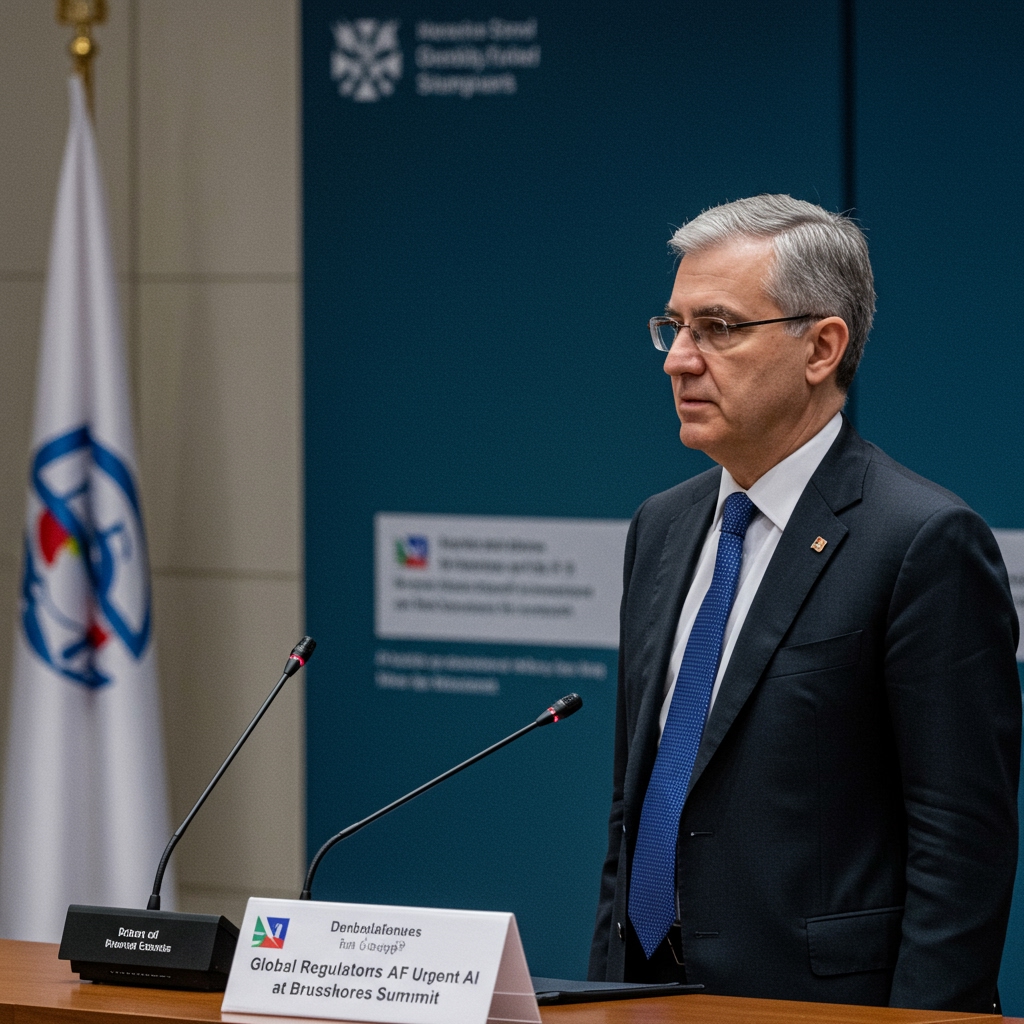Global Leaders Convene Amid Rising AI Concerns
Brussels, Belgium – Against a backdrop of rapidly accelerating artificial intelligence development and growing global apprehension regarding its potential risks, representatives from over 30 nations converged in Brussels on April 23rd for a critical, high-level summit. This assembly, deemed an “emergency summit” by some participating delegations, underscores the international community’s increasing urgency to address the profound challenges and opportunities presented by advanced AI systems. The distinguished gathering included senior officials from a diverse group of countries, notably the United States, numerous EU member states, China, and India, signifying a broad recognition that AI safety and governance require a globally coordinated response.
The decision to hold such a summit reflects the evolving landscape of AI capabilities, particularly the emergence of sophisticated “frontier models.” These models, exhibiting unprecedented abilities, also carry potential for misuse, propagation of misinformation, and even scenarios posing potential existential risks if not developed and deployed with robust safety measures and oversight. The rapid pace of innovation has, for many policymakers, outstripped existing regulatory and ethical frameworks, necessitating swift and decisive international dialogue.
Urgent Call for International Cooperation
The primary impetus behind the Brussels summit was the shared understanding that individual national efforts, while important, may be insufficient to effectively manage the global impact of AI. The cross-border nature of digital technologies, the concentration of advanced AI capabilities in a few key regions, and the potential for regulatory arbitrage all point towards the necessity of international cooperation. The presence of delegates from such a wide spectrum of geopolitical backgrounds, including major AI powerhouses and developing nations alike, highlighted the ambition to forge a truly global consensus.
Discussions on the opening day were ambitious in scope, focusing on laying the groundwork for potential international frameworks. A core agenda item was the establishment of shared AI safety standards that could be adopted or adapted by countries worldwide. Such standards would aim to ensure that AI systems, particularly the most powerful ones, are designed, tested, and deployed responsibly, incorporating safeguards against unintended or malicious behavior.
Key Objectives and Participants
Beyond safety standards, participants delved into the complex issue of oversight mechanisms specifically tailored for frontier models. Given the opaque nature of some advanced AI systems and their rapid evolution, effective oversight requires innovative approaches, potentially involving independent evaluations, transparency requirements, and mechanisms for identifying and mitigating novel risks before they manifest at scale. Strategies to mitigate misuse of AI technologies – ranging from autonomous weapons systems to sophisticated cyberattack tools and large-scale propaganda generation – were also central to the deliberations.
The roster of attendees included several high-profile figures instrumental in shaping digital policy on a global scale. Among them were European Commissioner for Digital Age Margrethe Vestager, a leading architect of the EU’s comprehensive AI Act and digital market regulations, and US Commerce Secretary Gina Raimondo, who has been at the forefront of the Biden administration’s efforts to promote US innovation while also implementing AI safety initiatives through executive orders and NIST standards. Their presence underscored the commitment of two major regulatory blocs to finding common ground on AI governance.
Navigating Complex Regulatory Terrain
The summit is taking place at a pivotal moment, with various jurisdictions developing distinct, yet sometimes overlapping, approaches to AI regulation. The EU’s AI Act, for instance, focuses on a risk-based approach, while the US has emphasized a mix of voluntary commitments, executive action, and agency-specific guidance. China has also introduced regulations, particularly concerning generative AI and data governance. Reconciling these differing approaches and finding common principles for international standards and oversight presents a significant diplomatic and technical challenge.
Further complexity arises from balancing innovation promotion with risk mitigation. Many participating nations are keen to harness the economic and societal benefits of AI while simultaneously addressing its potential downsides. The discussions in Brussels aimed to navigate this balance, seeking solutions that foster responsible development rather than stifling progress. The urgent nature of the summit reflects a growing understanding that proactive governance is essential to avoid potential negative consequences down the line.
First Day Outcomes and Path Forward
While the first day of the summit saw robust debate and a clear articulation of shared concerns, no binding agreements were reached. This outcome was largely anticipated, given the complexity of the issues and the diverse perspectives of the participating nations. Multilateral agreements on technology governance are typically the result of protracted negotiations and require significant consensus-building.
However, the absence of immediate binding commitments did not diminish the significance of the day’s proceedings. Participants did achieve a crucial consensus: the critical need for coordinated global action to address the array of risks posed by rapidly evolving AI technologies. This consensus represents a vital step forward, transforming a shared concern into a shared imperative.
The Urgency of the 2025 Deadline
Significantly, the delegates agreed on a timeframe for translating this imperative into tangible progress. The target date for developing coordinated global action frameworks is by year-end 2025. This deadline sets an ambitious pace, reflecting the rapid advancements in AI capabilities expected over the next eighteen months and the desire to establish governance mechanisms before potential risks escalate further. Achieving this goal will require sustained diplomatic effort and technical collaboration among participating nations.
The risks specifically highlighted as needing urgent attention included potential existential risks associated with advanced AI (such as loss of human control over highly capable systems) and the broad spectrum of ethical challenges (including bias, transparency, accountability, and societal impact). The discussions reinforced the understanding that these issues are not merely theoretical but require practical, implementable solutions on a global scale.
Looking Ahead: Working Groups and Challenges
The summit is scheduled to continue for two more days, moving beyond the initial plenary discussions into more focused work. Dedicated working groups will be established to delve into specific technical and policy challenges identified on the first day. These groups are expected to tackle detailed aspects of safety benchmarks, model evaluation methodologies, information sharing mechanisms regarding AI incidents, and potential avenues for international cooperation on AI research focused on safety and robustness.
The path ahead remains challenging. Differences in national interests, technological capabilities, and regulatory philosophies will need to be carefully navigated. However, the unprecedented gathering of over 30 nations in Brussels, including major global players, signals a collective recognition that the future of AI safety hinges on effective international collaboration. The success of the Brussels summit will ultimately be measured by the concrete progress made towards developing and implementing the agreed-upon coordinated global action frameworks by the ambitious year-end 2025 deadline.





